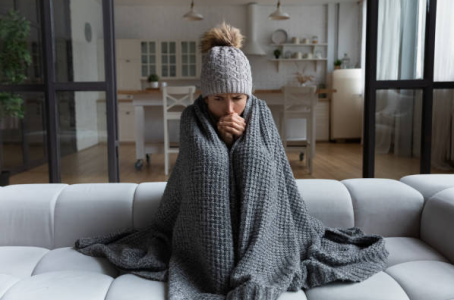Is Your Home Colder Than It Should Be? Discover the Surprising Reason Most Australian Houses Are Freezing
By
Gian T
- Replies 2
If you’ve ever found yourself shivering in your own lounge room, wrapped in three jumpers and a blanket, clutching a hot cuppa for dear life, you’re not alone. Despite our reputation as the sunburnt country, many Aussies know the peculiar misery of a winter spent indoors, teeth chattering, wondering why it feels colder inside than out. So, why are so many Australian homes so chilly—and what can you actually do about it?
Why Are Australian Homes So Cold?
It’s a question that’s baffled not just locals, but visitors from much colder climates. Social media is full of Canadians, Brits, and Americans scratching their heads at how frosty our homes can get, even when the mercury outside isn’t exactly Arctic.
The World Health Organisation (WHO) recommends keeping indoor temperatures at a minimum of 18°C for health and well-being. Anything colder can increase the risk of respiratory and cardiovascular issues, worsen mould, and even impact your mental health. Yet, a 2023 study found that a whopping 81% of Australian homes sampled were below this threshold during winter, with an average temperature of just 16.5°C. That’s colder than homes in Finland and Greenland—places where you’d expect to find actual snowmen, not just chilly pensioners!
So, what’s going on? The answer lies in our building standards and habits. For decades, Australian homes have been built with the assumption that we’re all living in a tropical paradise year-round. Many houses are poorly insulated, draughty, and fitted with inefficient heaters (if any at all). Our building codes have lagged behind those in Europe and North America, where energy efficiency and insulation are taken much more seriously. In fact, research shows that homes in similar climate zones overseas are 55% more efficient for heating and cooling than the average Aussie house.
The Cost of Staying Warm
It’s not just about comfort—being cold at home can have real health consequences, especially for older Australians. Cold homes can aggravate arthritis, increase blood pressure, and make it harder to fight off winter bugs. And with energy prices on the rise, many of us are left with the impossible choice between cranking up the heater and keeping the power bill under control.
What Can You Do to Warm Up Your Home?
The good news is, you don’t have to resign yourself to another winter of frozen toes. Whether you own your home or are renting, there are practical steps you can take to make your living space cosier.
For Homeowners: Invest in Insulation and Efficiency
- Insulation is Key: The best bang for your buck is improving insulation in your ceiling, walls, and floors. Good insulation keeps the warmth in and the cold out, making your home more comfortable and reducing your heating bills.
- Seal the Gaps: Draughts are a major culprit. Check for gaps around windows, doors, and floorboards, and seal them up with weather strips or caulking.
- Upgrade Heating Systems: Consider installing a split-system air conditioner with heating, or underfloor heating if you’re doing renovations. Make sure to service your heaters regularly and clean filters for maximum efficiency.
- Curtains and Pelmets: Heavy, lined curtains and box pelmets (the box that sits above your curtain rod) can make a huge difference by trapping warm air inside.
For Renters: Affordable Ways to Stay Warm
- Block Draughts: Use door snakes, weather strips, or even rolled-up towels to block cold air from sneaking in under doors and windows.
- Rugs and Soft Furnishings: If you have hard floors, lay down rugs to add a layer of insulation and keep your feet warm.
- Reverse Ceiling Fans: Many ceiling fans have a winter setting that pushes warm air down from the ceiling—give it a try!
- Portable Heaters: Electric or oil heaters can be effective for heating a single room. Just remember to close doors and windows to keep the heat in.
- Layer Up: Sometimes, the old-fashioned methods are best—layer your clothing, use hot water bottles, and snuggle under extra blankets.
Energy Bills Getting You Down?
Energy efficiency expert Adam Corrigan recommends starting by analysing your power bills and shopping around for a better deal. Even small changes, like switching to energy-efficient light bulbs or appliances, can add up over time.
Why Are We Still So Behind?
Professor Ralph Horne from RMIT points out that while Australia has long focused on water conservation, we’ve been slow to prioritise energy efficiency in our homes. With energy prices rising and climate change making weather more unpredictable, it’s more important than ever to make our homes comfortable and affordable to heat.
A Call for Change
There’s growing momentum for tougher building standards and incentives to retrofit older homes. In the meantime, every little improvement helps—both for your comfort and your wallet.
Credit: TikTok

Have you found clever ways to keep your home warm in winter? Do you have a favourite tip or a funny story about surviving the Aussie cold snap? Share your thoughts and advice in the comments below—let’s help each other stay toasty this winter!
Why Are Australian Homes So Cold?
It’s a question that’s baffled not just locals, but visitors from much colder climates. Social media is full of Canadians, Brits, and Americans scratching their heads at how frosty our homes can get, even when the mercury outside isn’t exactly Arctic.
The World Health Organisation (WHO) recommends keeping indoor temperatures at a minimum of 18°C for health and well-being. Anything colder can increase the risk of respiratory and cardiovascular issues, worsen mould, and even impact your mental health. Yet, a 2023 study found that a whopping 81% of Australian homes sampled were below this threshold during winter, with an average temperature of just 16.5°C. That’s colder than homes in Finland and Greenland—places where you’d expect to find actual snowmen, not just chilly pensioners!
So, what’s going on? The answer lies in our building standards and habits. For decades, Australian homes have been built with the assumption that we’re all living in a tropical paradise year-round. Many houses are poorly insulated, draughty, and fitted with inefficient heaters (if any at all). Our building codes have lagged behind those in Europe and North America, where energy efficiency and insulation are taken much more seriously. In fact, research shows that homes in similar climate zones overseas are 55% more efficient for heating and cooling than the average Aussie house.
The Cost of Staying Warm
It’s not just about comfort—being cold at home can have real health consequences, especially for older Australians. Cold homes can aggravate arthritis, increase blood pressure, and make it harder to fight off winter bugs. And with energy prices on the rise, many of us are left with the impossible choice between cranking up the heater and keeping the power bill under control.
What Can You Do to Warm Up Your Home?
The good news is, you don’t have to resign yourself to another winter of frozen toes. Whether you own your home or are renting, there are practical steps you can take to make your living space cosier.
For Homeowners: Invest in Insulation and Efficiency
- Insulation is Key: The best bang for your buck is improving insulation in your ceiling, walls, and floors. Good insulation keeps the warmth in and the cold out, making your home more comfortable and reducing your heating bills.
- Seal the Gaps: Draughts are a major culprit. Check for gaps around windows, doors, and floorboards, and seal them up with weather strips or caulking.
- Upgrade Heating Systems: Consider installing a split-system air conditioner with heating, or underfloor heating if you’re doing renovations. Make sure to service your heaters regularly and clean filters for maximum efficiency.
- Curtains and Pelmets: Heavy, lined curtains and box pelmets (the box that sits above your curtain rod) can make a huge difference by trapping warm air inside.
For Renters: Affordable Ways to Stay Warm
- Block Draughts: Use door snakes, weather strips, or even rolled-up towels to block cold air from sneaking in under doors and windows.
- Rugs and Soft Furnishings: If you have hard floors, lay down rugs to add a layer of insulation and keep your feet warm.
- Reverse Ceiling Fans: Many ceiling fans have a winter setting that pushes warm air down from the ceiling—give it a try!
- Portable Heaters: Electric or oil heaters can be effective for heating a single room. Just remember to close doors and windows to keep the heat in.
- Layer Up: Sometimes, the old-fashioned methods are best—layer your clothing, use hot water bottles, and snuggle under extra blankets.
Energy Bills Getting You Down?
Energy efficiency expert Adam Corrigan recommends starting by analysing your power bills and shopping around for a better deal. Even small changes, like switching to energy-efficient light bulbs or appliances, can add up over time.
Why Are We Still So Behind?
Professor Ralph Horne from RMIT points out that while Australia has long focused on water conservation, we’ve been slow to prioritise energy efficiency in our homes. With energy prices rising and climate change making weather more unpredictable, it’s more important than ever to make our homes comfortable and affordable to heat.
A Call for Change
There’s growing momentum for tougher building standards and incentives to retrofit older homes. In the meantime, every little improvement helps—both for your comfort and your wallet.
Credit: TikTok
Key Takeaways
- Many Australian homes are colder inside than houses in colder countries due to poor insulation, draftiness, and less stringent building codes and standards.
- Most Australian homes fall below the World Health Organisation’s recommended minimum temperature of 18°C during winter, which can have negative health impacts.
- Improving home warmth can involve retrofitting with better insulation, sealing drafts, upgrading heating systems, and using heavy curtains, but renters can use options like weather strips, door snakes and portable heaters.
- Rising energy costs and a lack of focus on energy efficiency have left many Australians struggling to keep their homes warm in winter and to afford heating bills.








